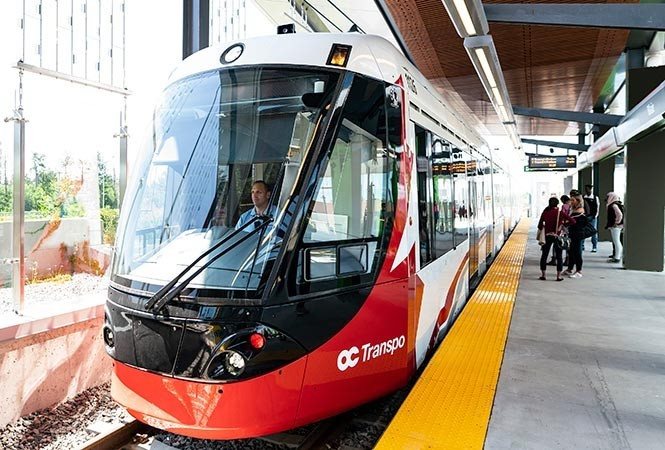O-Train Notification Protocols
The following is a memo that
------
The purpose of this email is to provide Members of Transit Commission and Council an overview of the protocols related to notifications for customers on the O-Train system.
In the event of a delay to service on O-Train Line 1, OC Transpo has a communication plan in place to alert customers of the delay and provide them with timely service updates so that, if required, they can consider alternatives and adjust their travel plans accordingly.
OC Transpo alerts customers about train delays using the following channels:
- Audio announcements on trains;
Information displayed on screens in trains;- Audio announcements in stations;
- Alerts displayed on information screens in stations;
- Twitter (@OCTranspoLive and @OCTranspoDirect);
- octranspo.com (both on home page banner and in the service updates);
- Subscription-based SMS and email notifications;
- Automated telephone recordings on the customer service and information line; and, in some cases,
- Signage at stations.
To ensure the timely and effective delivery of alerts to customers, the selection of channels we use to notify customers of service delays is determined by the duration of the delay and the resulting impact
Short delays have a low impact
Longer delays have a greater impact on customers and on the system, and so we provide alerts on trains and stations, on octranspo.com, on social media, and through our notification system, in order to alert customers before they enter a station or begin their travel.
The following table outlines the communication channels used during delays on Line 1 based on the above-mentioned criteria.
| Nature of Delay | Communication Channels |
| Short delay affecting |
|
| Delays that affect most trains on the line or where significant residual delays may occur |
|
| Activation of R1 bus replacement service |
|
Staff have prepared standard alerts in both languages to notify customers about various incidents or service disruptions; these messages have been crafted in advance and in consultation with other transit agencies and experts in the field. The alerts are concise and contain information advising customers of the impact
It should be emphasized that the priority for any alert that goes beyond the notification of customers on trains or in stations is to ensure that the message delivered to customers is accurate, timely, posted in both official languages and tells customers what they need to know to adjust their travel (for instance, "Line 1 is currently not operating. R1 replacement bus service is now in operation."). These factors will influence each unique situation and be guided by operational experience, best practice and decision-making by staff directly aware of the on-the-ground operational information. Experience from other transit agencies has told us that an over-emphasis on
In addition, the Mayor, Members of Council and Members of the Transit Commission are informed of events that occur where there is an identified risk to public safety or where there is significant disruption to service (i.e. road closures or city-wide delays). If an incident or its response extends over a period of time, the General Manager, or designate, will continue to provide situational updates as warranted or as information becomes available.
For a delay that occurred on September 26, these processes were not followed fully, and as a result, there was a gap in communicating to customers who had not yet entered stations or boarded trains. Feedback from customers that day has assisted staff in refining the processes described here. In particular, staff will be targeting alerts that are published to SMS/email, octranspo.com, and Twitter more closely on the information that customers need to know before they enter a station or begin their travel. The more location-specific information, such as which platforms trains are serving, will be provided to customers once they are in the station. By using more standard, pre-written messages, this refinement to the process reduces the time required to translate and validate the alerts.
John Manconi
General Manager, Transportation Services Department
